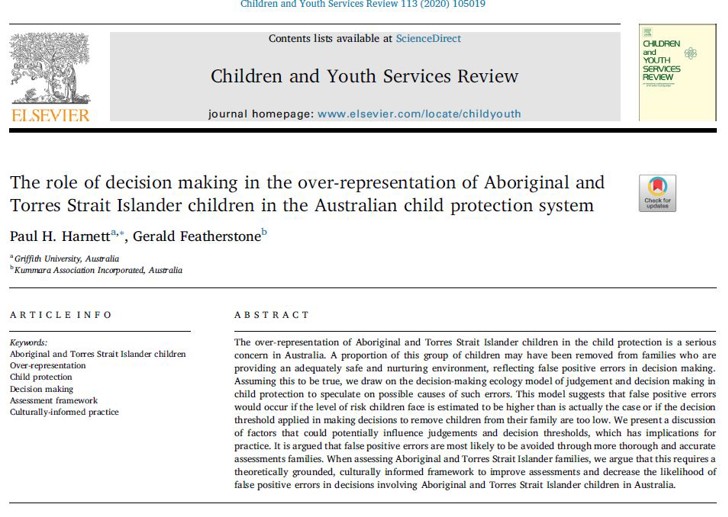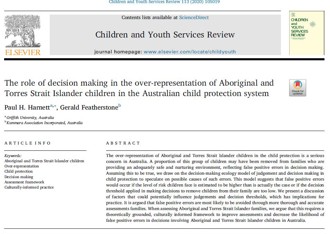ABSTRACT
The over-representation of Aboriginal and Torres Strait Islander children in the child protection system is a serious concern in Australia. A proportion of this group of children may have been removed from families who are providing an adequately safe and nurturing environment, reflecting false positive errors in decision making.
We draw on the decision-making ecology model of judgement and decision making in child protection to speculate on possible causes of such errors. This model suggests that false positive errors would occur if the level of risk children face is estimated to be higher than is actually the case or if the decision threshold applied in making decisions to remove children from their family are too low. We present a discussion of factors that could potentially influence judgements and decision thresholds, which has implications for practice. It is argued that false positive errors are most likely to be avoided through more thorough and accurate assessments families. When assessing Aboriginal and Torres Strait Islander families, we argue that this requires a theoretically grounded, culturally informed framework to improve assessments and decrease the likelihood of false positive errors in decisions involving Aboriginal and Torres Strait Islander children in Australia.

